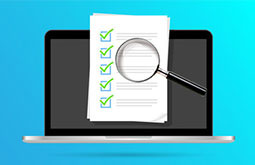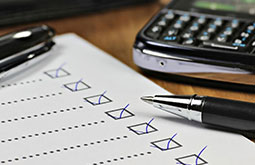Top Proofreading Tips to Generate Flawless Content
Proofreading and editing are common terminologies, however, most people are not really aware of the differences between the two processes. Proofreading is not the same as editing. Editing involves an in-depth review and rectification process whereas proofreading refers to the process of conducting a review of the final draft so as to ensure accuracy in terms of grammar, punctuation, and spelling and to ensure formatting consistency.

Traditional Proofreading
The word ‘Proofreading’ has different meanings for different professionals in different industries. For example, for some, proofreading may include elements of editing as well. For a publisher, proofreading is a process of revising the final draft before it is sent for printing. On the other hand, for students at a university, it would mean checking typographical, formatting, or grammatical errors before handing over their dissertations to their professors.
Tips that would make you a better proofreader
Be it a marketing, legal or business copy, proofreading may turn out to be a really strenuous job. And you are most likely to make mistakes or rather fail to detect mistakes if you are stressed out and unable to focus. This holds particularly true if you have been proofreading a lengthy document for quite some time at a stretch. Professionals delivering proofreading services or reputed companies offering high-quality proofreading and copyediting services follow certain tried and tested proofreading tips that help them to produce finer and flawless versions of content.
Improve your proofreading skills by following these vital proofreading tips and tricks:
Relax and take time.
So the editing stage is over and you are on the way to proofread your document! Well! Wait for a few weeks and try to stay away from your precious work. Ideally, you should wait for 6 weeks before you start rechecking your manuscript. The longer you wait, the greater would be the number of mistakes that you would be able to detect.
Choose the Right Time and Location.
Choose what time of the day suits your mind and wait till it approaches. A quiet, comfortable place that is free of distractions is the best bet for proofreading an article. Avoid proofreading in a noisy environment and amidst the swiftness of daily life.
Make a list of the common errors that you make.
Everyone has the tendency to make the same type of mistakes over and over. It could be grammatical, styling or typing errors. If you have observed, there must be a pattern to your mistakes. Maintain a list of the mistakes that you make as it will help you reduce the instances of such errors. This is one of the best tips for proofreading your own work. Sometimes, it could be simply that you aren’t aware of the correct way of putting it across or there are chances that a word is simply difficult for your eyes to catch unless you make real efforts to find the same. When you have the list of words that you commonly type wrongly, you can use the “Find” option in MS-Word and see if you have written it correctly or not.
Proofread a Printed Version.
A printed version is always suited for spotting errors. Proofreading a printed version of your manuscript offers a varied and better perspective compared to proofreading a soft copy. It promotes an easier error-rectification process. Make sure that the line spacing is 1.5 and the font size is at least 12. Some of the professional digital prepress companies that provide page formatting as well as error correction services stick to print media for better evaluation of errors.
When you proofread on paper, use a red pen.
If you are reading the text from a paper, use a red pen or a marker to make the corrections. This will help you find the errors more easily. If you use any other color or a pencil, you may miss out a few mistakes. Though simple, this is regarded as one of the most important proofreading tips and techniques.
Ensure that the spelling of names is consistent.
If you are thinking how to proofread professionally, then ensuring that spellings are consistent across the document is really important. This becomes extremely important for names; a name should not be spelt in one way at the beginning and in another way at the end. Consistency of spelling is vital to improve the readability of any write-up.
Do not miss quote marks.
If you are creating a book, or an eBook for that matter, you will be using a lot of quotes. Professional ebook proofreading demands accuracy. One of the common mistakes made by writers is that they forget to close the quote. However, it is essential to keep in mind that you must close the quotes since unclosed quotes can negatively impact the reading experience . Further, most of the styling guides suggest that the period must be placed inside the last quote.
Make use of a ruler while you proofread.
Another simple yet effective tip to ensure that your proofreading is effective is to have a ruler while you are carrying out the task. Most of the times, we tend to lose focus and slip from one sentence to another. In that case, there are chances that the missed sentence might actually have a wrong word. This simple slip can actually spoil the effects of your proofreading efforts. As such, while proofreading, utilize a ruler for better accuracy and effectiveness.
Use tracking tools.
Since it is hard to follow the plot lines of manuscript, use of tracking tools is always advisable. There are numerous timeline and plot tracker templates available on the internet. Inconsistencies with regard to timeline, plot and character are the main causes of errors in a fiction.
Conduct fact-checking and look for misused homophones.
Inaccuracy cannot be an excuse even if the manuscript is a fiction. Checking the facts during the drafting stage is important. Geographical facts, distances, and place names are very important. Also, don’t forget to check for unused homophones. Irregular usage can cripple your fiction work.
Enlarge the text that you are editing.
Using a huge screen and zooming up the document that has to be reviewed would offer some relaxation for tired eyes. When you zoom the document during proofreading, you will reduce the strain in your eyes, which, in turn, would lead to better results.
Follow a proofreading cycle.
It is a time consuming affair to carry out several phases of proofing, but the effort that you put in can produce remarkable results. First of all, run a spell check to make sure that the most misspelled words are detected. Checking of headers, footers and page numbering would follow this step. Since the process is automated, there is practically no chance of errors. Continue the process till the whole document is cleaned. Following a cycle is one of the most operative tips for successful proofreading.
Include periods of rest in your schedule.
A tired mind is more prone to making mistakes than a refreshed mind. As the process of proofreading takes hours, it is often good for you to enjoy moments of relaxation between your schedules.
Read out loud
Consider reading out the manuscript loud to spot major differences and grammatical mistakes. You cannot simply opt to read silently and understand that everything is alright while that hidden mistake is secretly going to cause you big damage. Reading aloud helps you in detecting errors with more ease.
Point at words for better precision.
While going through words, it would be good if you can point at each of them so that you can spot the notorious “of” which became “off” and still the spell checker tool let it through. Missing words can also be detected using this nifty little technique. The said tip should be carefully applied because lack of precision in spellings can change the meaning of the whole context to a significant extent.
Divide the read part using a ruler.
Using a ruler to divide the read part from the unread is a good idea. Even though it is hard to implement the technique when you are proofreading a document in electronic format, this is a good trick to practise if you are copyediting hard copies. This technique is extensively used as a proofreading tip and technique by a lot of professional service providers.
Going opposite of the normal form
An interesting proofreading strategy that is often adopted by professional proofreading service providers is to try checking the last sentence first. Starting the proofreading process from the end of the document helps to slow down and spot errors better.
Conclusion
Proofreading may feel tougher if you are required to proofread legal documents. In that case, you may need to seek professional assistance from experienced legal writers. You can also consider going through this proofreading-and-editing-checklist just in case you want to make sure that you can note down the main points.
If you are looking for professional proofreading and copyediting services, you should look for companies that have created a strong identity in the market. If you are planning to explore a career in proofreading or if you are looking to proofread your own manuscript, we hope that the abovementioned tips would prove to be useful for you. The last tip that we would like to give you is that proofreading is all about patience, so you should make sure that you have enough of it.




